Kokedama Care: [Earth, Moisture, Pruning and Problems]
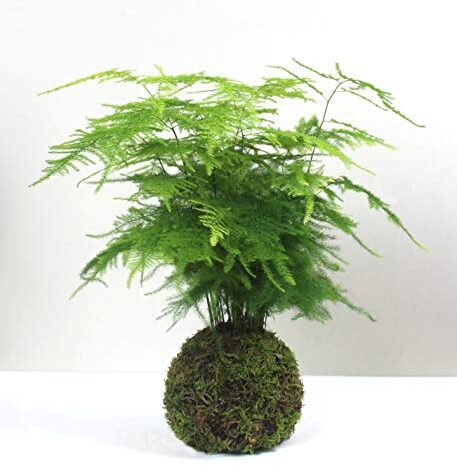
What is kokedama?
Those who have this plant in their home combined with this technique consider that it is antistressing, at the same time that it reduces anxiety and fights insomnia due to the contact it involves with nature, which is one of the best ways to improve the quality of life.
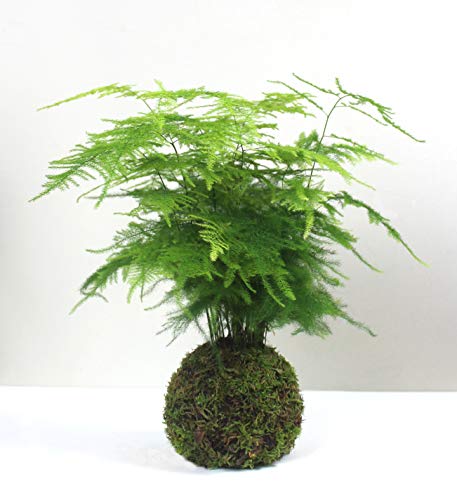
The contact is given when, instead of a pot, we use a clay of volcanic origin that is modeled with moss around the roots of the plant , so that it is integrated into a single piece, as if it were a natural whole.
The mere fact of doing it with our hands impregnates an ecological sense to our senses, because the kokedama technique is a direct contact with nature, and the plant thus represented, is integrated into the interior spaces of the home as a way out of a forest.
What land needs does a kokedama plant have?
One of the things that we must take into account is that the kokedama is totally different from the traditional forms, since we will choose a plant for ornament and everything will depend on the consistency of the moss in which it will be submerged. The good thing about this technique is that it allows you to work with all types of plants, regardless of whether they are indoor or outdoor .
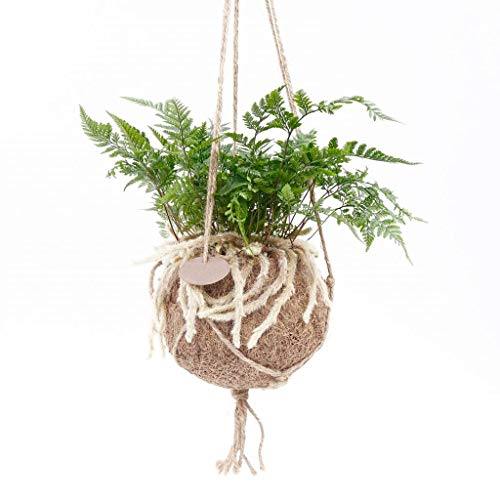
We can do it with floral plants, aromatic herbs, shrubs, ferns, ivies, succulents, orchids and other floral plants, and even with cacti, or, rather, especially with cacti, because they give it a completely natural shape when integrated into a single plant, as if we had collected it integrated from the desert .
Ribbons and ferns in hanging kokedamas are also recommended. In the elaboration, we will use akadama , which is volcanic clay used in bonsai, and mineral substrate , with which we mold a ball around the roots of the chosen plant and then we will wrap it in a layer of moss that we will tie with a brown thread until become compact.
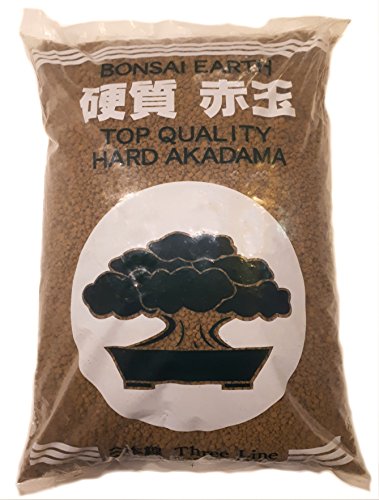
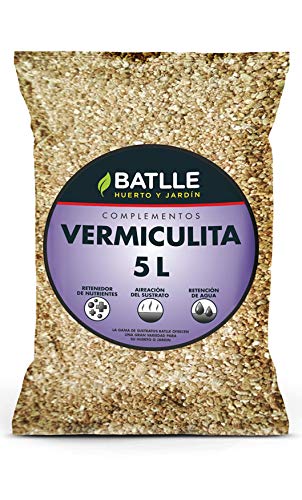
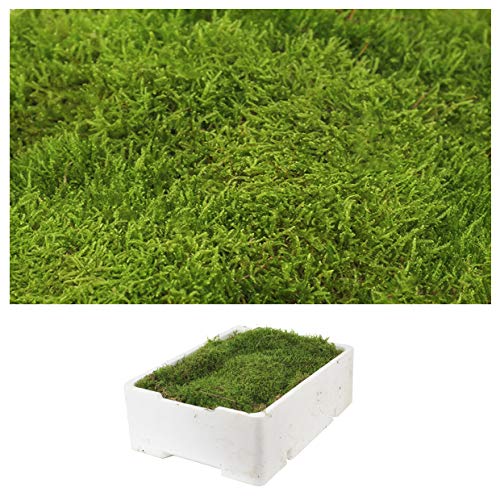
That layer of moss will occupy the place in the pot where we will put the plant. Also, since there are ecologists who advocate for the conservation of moss (and even in Mexico its extraction is considered illegal), it can be done with a mixture of substrates , such as 70% peat , 25% clay to contain moisture. , and 5% perlite .
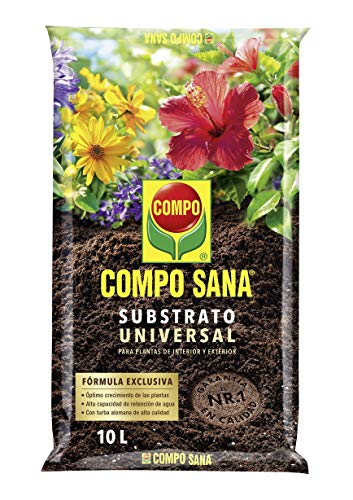
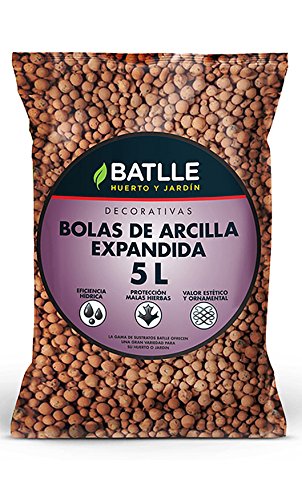
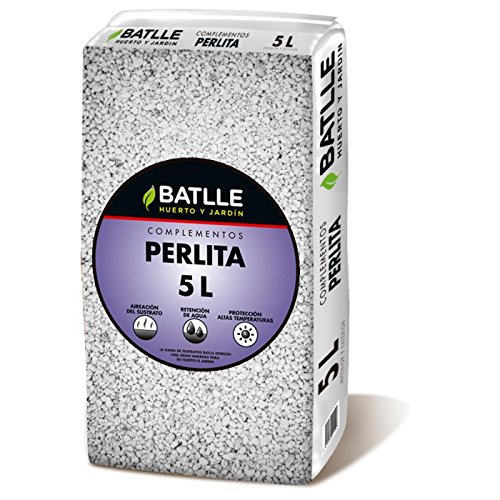
Thus, we moisten the mixture of substrates until we achieve a consistent mud. When it is muddy, it does not last, we make a ball (it can also be square), we make a hole in the upper part of the mixture, we place the plant and cover it with the ball, which we will tie with thread or coconut fiber to maintain its consistency .
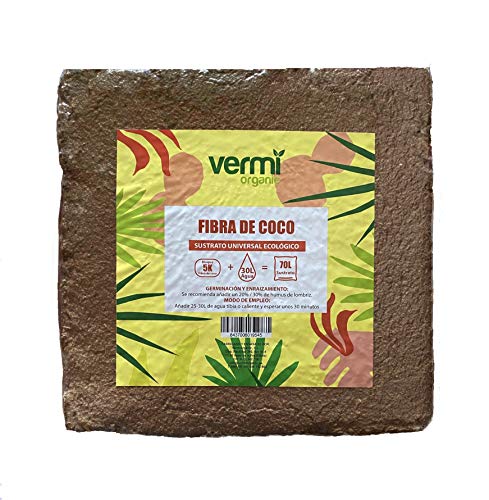
How to keep a kokedama?
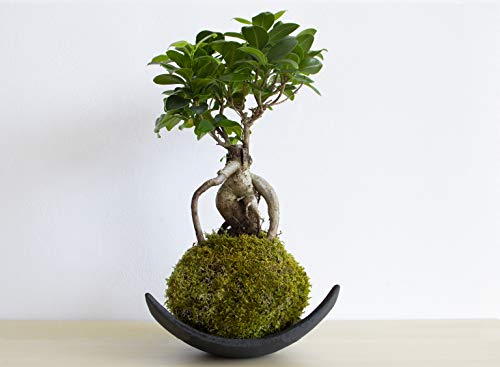
As has been said, the difference in the Kokedama technique is that we will have done it with our own hands.
That is, we will have integrated with nature, and in that case we will take more care in the maintenance and development of the plant, as we do with our own children.
What gives this technique a wonderful touch is that it is not the same to sow in soil or in a pot than to do it with effort as your own creation, which is why, in Spain, this technique is learned in workshops taught in Madrid and others. cities by experts dedicated to the care of nature.
The maintenance of the kokedama is also different, for example, the irrigation is not the traditional way, because we do it by immersion, and the frequency depends on the season of the year.
Experts consider that watering should be done, in spring and summer , once or twice a week, especially if we notice that the moss is drying out or is completely dry; and in autumn and winter, only twice a month, also in case of dry moss.
When doing so, we must completely submerge the moss ball in a bowl of water for a few minutes, until we observe some tiny bubbles that will come out of it, at which point we must remove it and drain it, and when it stops dripping it will be ready to place it in the place that we have destined.
In case of living in a place with a dry or very hot climate , we will water the plant and maintain the kokedama by spraying it with a spray containing a fertilizer diluted in water.
We can place it in different ways, according to the environment that we have programmed in our house: on stones, on a clay base, on a solid base, or hung from the ceiling, which all work because kokedama in itself is elegant, something that As it is not traditional, it will attract attention.
What moisture does a kokedama need?
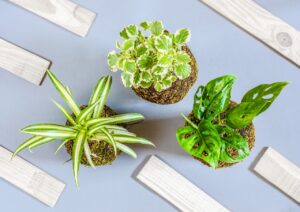 A plant in these conditions can live for years. The required humidity will depend on the type of plant chosen.
A plant in these conditions can live for years. The required humidity will depend on the type of plant chosen.
There are those that require more humidity than others, so it is advisable to consult a specialist.
As for the kokedama, we must be aware of the humidity that the moss requires, and if it begins to deteriorate, we must replace it. This should not be a problem, since we will have already learned the technique to do it.
For example, if we notice that the plant needs to grow, the moss ball should be larger. What is recommended is that, indoors, the location of the kokedama should be in a bright place, but protected from direct sun, away from drafts and direct heating.
And outside, it is also advisable to keep it away from direct sunlight and hot and cold air currents.
Is it necessary to prune a kokedama plant?
Give it the shape it requires, remove the withered leaves and flowers , clear the path of branches in poor condition to make way for new ones, that is, the maintenance required in each case.
How often should we prune a kokedama plant?
Pruning time also depends on the plant. Therefore, when applying the kokedama technique it is essential that we know how to choose the plants because their health will depend on it. For example, a floral plant is not the same as a palm tree , since each requires different care.
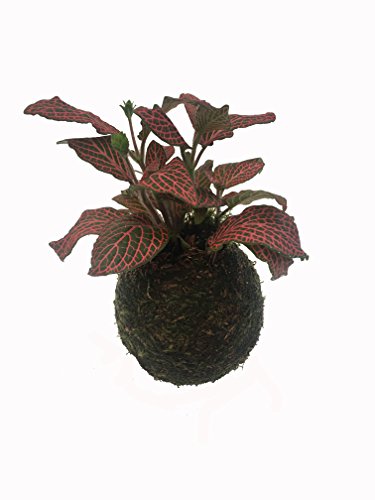
The kokedama is an ornamental technique, the care of the plant depends on our knowledge on the subject or the advice that we have; Only in this way can we keep our garden, our orchard or the interior of our residences, and even our offices, in good condition .
How to avoid pests and diseases on the plant of a kokedama?
The pests and diseases of kokedama plants are the same that attack nature in general. spider mites, mealybugs, fungi, whiteflies , and other predators lurk.
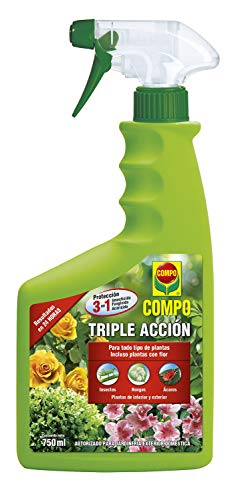
So we must be very careful and be aware of the plant, in order to fumigate when it corresponds preferably with products of organic origin.

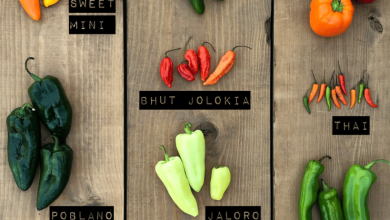
![Photo of Jade Plant: [Cultivation, Irrigation, Associations, Pests and Diseases]](https://www.complete-gardening.com/wp-content/uploads/2022/08/jade-plant-cultivation-irrigation-associations-pests-and-diseases-390x220.jpg)
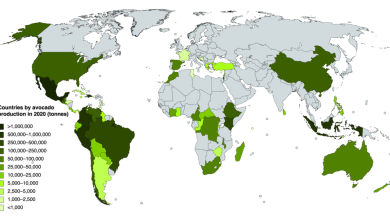
![Photo of Kumquat Care: [Soil, Humidity, Pruning and Problems]](https://www.complete-gardening.com/wp-content/uploads/2022/08/kumquat-care-soil-humidity-pruning-and-problems-390x220.jpg)